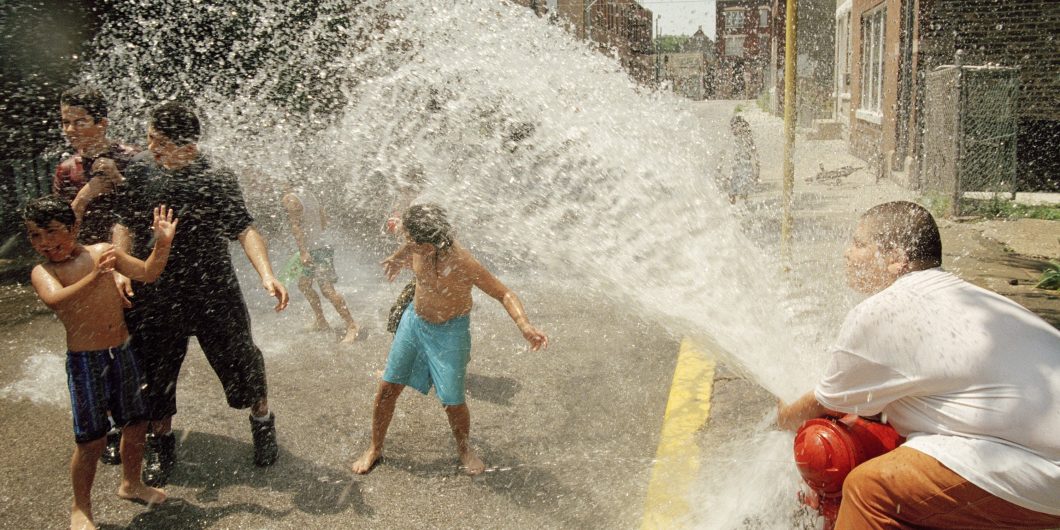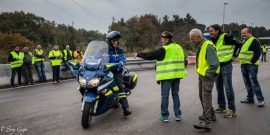Alaska is the antithesis of hipster mecca Austin—in a good way
Not by Air Conditioning Alone
The story of the deadly Chicago heat wave of 1995 was one of many shared by the late Jane Jacobs in her 2004 book, Dark Age Ahead. Best known for her 1961 The Death and Life of Great American Cities, Jacobs had long eyed social science experts with suspicion. She had been getting in trouble for questioning authority since her high school days, and though she never graduated from college, she made her career taking on hordes of PhDs in urban planning, sociology, and economics. Her doubts about Adam Smith’s “man of system” ran as deep as her high regard for the capacities of diverse communities to organize and sustain themselves, a respect built up over decades of keeping her eyes on neighborhoods, streets, and sidewalks.
I was in medical training at the University of Chicago when the heat wave struck. During the five days beginning July 12, temperatures reached a high of 106 degrees Fahrenheit, and even during the night, the mercury hovered in the 80s. The culprit was a large high-pressure system that sauntered across the Midwest, compounded by a paucity of wind and drenching humidity. Power outages rendered many air conditioners useless. While precise figures are difficult to come by, it is estimated that the city suffered about 750 excess deaths during the heat wave. The healthcare system was overwhelmed, so much so that a local meatpacker offered to relieve the medical examiner’s office by storing bodies in his refrigerated trucks.
My colleagues and I witnessed it all from the university’s south-side hospital. Patient after patient was brought into the emergency department suffering from dehydration, kidney failure, and heat stroke, which quickly landed some victims in the intensive care unit. For every person who died, there were many more who fell ill, and while we did our best to stabilize them, many suffered long-term damage. In the heat of the moment, we gave little thought to the source of such widespread distress, simply cursing the historic dog days. We trusted that experts would come along later and get to the bottom of things.
Indeed, the US Centers for Disease Control soon dispatched a team of 80 researchers to investigate and develop more effective countermeasures. They paired each victim with a randomly selected survivor and concluded that deaths were largely attributable to deficits in hydration and air conditioning. Survivors, in short, had managed to keep cool and hydrated, while victims, who typically had underlying medical conditions, failed to take appropriate steps to secure their own survival. The results were published in the New England Journal of Medicine with the conclusion that “Those at greatest risk of dying from the heat wave were people with medical illnesses who were socially isolated and did not have access to air conditioning.” Hardly surprising or illuminating.
Then along came graduate student Eric Klinenberg, a Chicago native, who noticed that death rates varied widely among different parts of the city. He compared different neighborhoods that had similar rates of elderly people living alone. He found that the death rate in North Lawndale was 10 times that in adjacent South Lawndale. As a rule, residents of North Lawndale were not in the habit of going for strolls, because they had few businesses or gathering places to walk to. As a result, they were socially isolated, had no one to reach out to, and eyed efforts by strangers to check on them with suspicion. By contrast, residents of South Lawndale got out and walked in their community, were acquainted with air-conditioned buildings where they could take refuge, and trusted those who checked on them.
Klinenberg peered even more deeply. In North Lawndale, the population had been thinned out by flight to the suburbs. It was full of vacant buildings and lots. By contrast, South Lawndale had remained relatively densely populated, allowing people to stay connected. Another factor was gender. Most assumed that there would be more deaths among women, since more elderly women than men live alone. But men were twice as likely to die as women, largely because elderly women are more likely to maintain a network of relationships with neighbors. Finally, Latinos were much less likely to die than whites or blacks, a fact attributable to the much higher population densities of Latino communities.
As Jacobs saw it, people are brighter and more capable of looking after themselves than we commonly suppose. They can often respond with greater understanding, precision, and efficacy than any external organization, no matter how imposing its budget.
The key to combating heat waves, it turns out, is not merely to install more air conditioners and robust power grids, but also to reduce poverty, isolation, and fear. Investigators seeking to unravel the complex causes of such disasters need to recognize that health is as much a social as an individual attribute. It is not enough to examine one person’s blood sugar levels, waistline, or alcohol consumption. It is also necessary to look at communal patterns of life. The CDC investigators spent considerable time, resources, and money to determine that “air conditioners and water are good for combating heat.” Building their frame of reference around individuals and not communities both reflected and perpetuated a misleading analytic perspective.
In Dark Age Ahead, which Jacobs published at the age of 87, she draws out the lessons of the great Chicago heat wave, expressing sentiments both “gloomy and hopeful” regarding the future of North America. While she saw conditions as ripe for sliding into a cultural dead end, such a fate could be avoided by “retaining and further developing our living, functioning culture, which contains so much of value, so hard won by our forebears.” One of the most worrisome symptoms was the widespread conviction that such a social decline could never happen here. Perhaps every culture that followed the path of the dinosaurs has been similarly oblivious of its own fragility.
Jacobs focused on five pillars and the ominous signs of decay at work in each. These included community and family, higher education, science and technology, taxation, and self-policing by the learned professions. She expressed an awareness that these pillars will surprise and disappoint many, who expected her to decry racism, environmental destruction, crime, low rates of political participation, voter distrust, and growing inequality. Yet this second group of factors, she believed, are products of breakdowns in the first. Moreover, she argued that the five pillars on which she focused are widely under-appreciated and in need of most urgent attention.
As the bonds of family and community decay, people are left more isolated and vulnerable. To serve them we must understand what they are, not just in terms of demographic and public health statistics, but through close observation of daily life. Higher education needs to do more than fill the head with facts and figures. It must educate the eye, discipline the ear, and open the heart, enabling learners to peer more deeply into what is really happening. Science should be regarded as one among multiple windows that clarifies some aspects of truth but obscures others. The necessary evil of taxation should interfere as little as possible with the expression of personal and social excellences. And professions need to take more seriously their responsibility to protect those they serve.
In describing the third of her five pillars, science and scientific technology, Jacobs addressed a particularly venerable, Socratic concern—the need to pose good questions. The Socratic modus operandi, responding to a question with a question, is a reminder that the wise are often distinguished not by their answers but by the quality of their questions. The question as first posed is not always the one that most needs to be addressed. In the 1995 Chicago heatwave, it was not enough to know that cases of heatstroke were increasing, or even that many deaths could have been prevented by air conditioning. The most important questions needed to be posed at the level of neighborhoods, drawing out the interplay between social connectedness and resilience in the face of disaster.
As Jacobs saw it, people are brighter and more capable of looking after themselves than we commonly suppose. Given the opportunity, they can often respond with greater understanding, precision, and efficacy than any external organization, no matter how imposing its budget and personnel. Experts have a role to play, but in most cases, their top priority should be to listen and form collaborations with those they serve. They have at least as much to learn as to teach, and until this is understood, they should tread respectfully and with caution.
Jacobs’ intense curiosity often landed her at odds with experts who sought to dismiss her as a housewife and mother, a college dropout, and a dilettante. But Jacobs dug deeper and refused to accept superficial answers. She presciently warned that North Americans are preoccupied with answering second- and third-rate questions, while first-order ones go largely unposed and culture “drifts toward darkness.”



